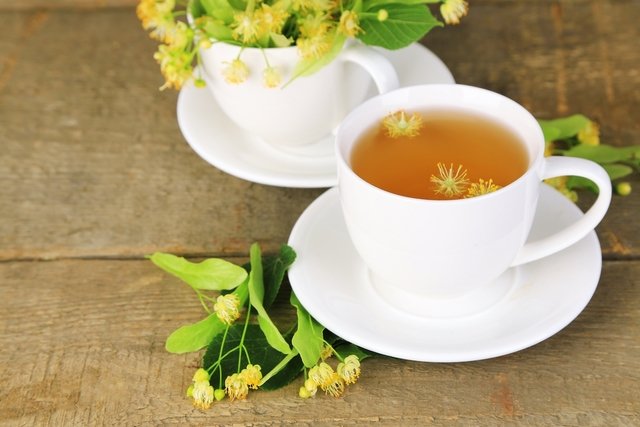Linden, also known as tilia, is a medicinal plant which is commonly used to help treat various health problems, such as anxiety, headaches, diarrhea and indigestion.
Although the linden tree originates from Europe, this plant can be found all over the world. The Linden chordata, the Linden platyphyllos and the Linden x vulgaris are the most commonly used species.
Linden can be found in health food stores, supermarkets and pharmacies, in the form of dried flowers and leaves or sachets that can be used to prepare teas, or even in the form of a tincture.

Health benefits
Some proven health benefits linden are:
1. Reducing anxiety
Linden contains kaempferol and quercetin, which are bioactive compounds that have calming effects. They work on the central nervous system to promote relaxation, which can help with managing stress and anxiety.
Also recommended: Stress vs. Anxiety: Difference Between Symptoms & Consequences tuasaude.com/en/stress-vs-anxiety2. Treating fever
One of the most common effects of linden is its ability to increase sweating. This can help to relieve fevers caused by the cold or flu.
This effect of linden, known as a diaphoretic effect, is due to the presence of substances such as quercetin, kaempferol and coumarin acid.
3. Regulating blood pressure
Linden helps to regulate blood pressure as it contains tiliroside, chlorogenic acid and rutoside. These are bioactive compounds with antioxidant and anti-inflammatory properties that help improve arterial health, which facilitates optimal blood circulation.
Furthermore, this plant also has a diuretic effect. Its ability to eliminate excess fluids through the urine can help to regulate blood pressure.
4. Reducing fluid retention
Because of its natural diuretic effect, linden increases urine production, reducing fluid retention. When this happens, excess fluid is eliminated from the body, treating and preventing fluid retention.Check out other natural diuretic teas that you can prepare to help eliminate excess fluids.
5. Combating stomach pain
Linden contains caffeic acid, kaempferol, quercetin and tannins. These bioactive compounds have relaxing, antioxidant and anti-inflammatory properties that help reduce inflammation and stomach pain.
6. Reducing blood glucose
Because it contains tiliroside, a bioactive compound with antidiabetic action, linden helps regulate blood glucose levels and can be used a complement to the medical treatment of diabetes.
This antidiabetic effect is linked to the inhibition of alpha-glucosidase, an intestinal enzyme that promotes the absorption of sugar from food into the blood.
In addition, linden also appears to inhibit another enzyme, alpha-amylase, which is found in the intestinal tract and is also responsible for digesting and promoting the absorption of carbohydrates.
7. Preventing obesity
Linden can also inhibit the action of pancreatic lipase, an enzyme that is responsible for fat absorption. Consuming linden can help reduce fat absorption from food, which can help with weight management to prevent obesity.
8. Treating yeast infections
Although it is a lesser-known property of this plant, linden has antifungal action and can therefore be taken as a complement to the treatment of some fungal infections.
9. Strengthening the immune system
Linden contains chlorogenic acid and caffeic acid, which are bioactive compounds with antioxidant and anti-inflammatory action. It strengthens immune system cells and can help to fight viruses, bacteria and fungi, making it great for preventing symptoms of sinusitis and allergies.
How to take
Dried linden flowers and leaves can be used in the form of teas or tinctures. This plant can also be used in cooking to add flavor to dishes like desserts and ice cream.
1. Linden tea
Ingredients:
- 1/2 teaspoon (1.5 g) of dried linden flowers and leaves
- 200 ml of water
Directions:
Boil the water in a pot. Remove from heat and add the linden flowers and leaves. Cover and allow to steep for for 5 minutes. Then strain and drink 2 to 4 cups per day.
For children between 4 and 12 years old, only 1 g of linden should be used for every 150 mL of boiling water.
2. Tincture
The recommendation dose for a linden tincture is 2 mL (approx. 40 drops). This should be diluted in a glass (100 mL) of water and taken 1 to 2 times a day.
Side effects and contraindications
Some people seem to be more sensitive to linden flowers and may develop allergy symptoms such as itchy skin, sneezing and a runny nose after consuming it.
There are few studies available on the possible contraindications of this plant, however there are suspicions that linden may have a toxic effect on the heart muscle. Therefore, linden is not recommended for people with cardiac problems.
Furthermore, linden should also not be consumed by children under 4 years of age, nor by pregnant or breastfeeding women, as there are no studies that confirm its safety in these populations.
